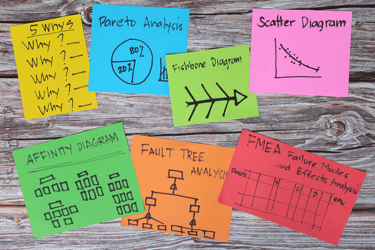The Packaging Industry's Sustainability Challenge: Why ERP Systems Are Essential for Success A straightforward guide to navigating sustainability regulations across folding carton, flexible...
MES Implementation: A Step-by-Step Guide
Manufacturing Execution Systems (MES) are critical for packaging manufacturers looking to increase visibility, reduce waste, improve lead times, and drive sustainable growth.
But MES implementation isn’t as simple as buying software and 'plugging it in.'
This guide takes you through the stages required to ensure a successful MES implementation process. It uses best practices from the industry to help you avoid common mistakes and get the most value over time.
Contents
- 1. Strategic Planning: Start with Why
- 2. Define Your Project Scope
- 3. Choose the Right Partner, Not Just the Right Product
- 4. Audit Current Processes & Infrastructure
- 5. Define and Track Key Metrics (KPIs)
- 6. Implementation Planning: Roadmap to Rollout
- 7. System Configuration & Customization
- 8. Test, Train, and Champion
- 9. Deploy and Support
- 10. Continuous Improvement & Scaling
- 11. How to Measure MES Success
- 12. Common Pitfalls to Avoid
- Conclusion
1. Strategic Planning: Start with Why
Begin with your strategic goals. Are you aiming to improve delivery performance, reduce material waste, or increase throughput? Your objectives will inform every decision throughout implementation.
Build a cross-functional team with representation from operations, IT, planning, quality, and leadership. Secure executive sponsorship early to support budgeting, change management, and accountability.
2. Define Your Project Scope
Clarify what problems you're solving and what success looks like. Are you starting with a single site or multiple lines? Will MES control all work centers or focus on specific bottlenecks?
Define boundaries and priorities. A clear scope enables better planning, budgeting, and resource alignment.
3. Choose the Right Partner, Not Just the Right Product
Not all vendors offer implementation services. Look for a solution provider with packaging industry expertise and a strong track record of hands-on integration.
Ask about:
- Project methodology
- Integration capabilities
- Post-go-live support
- Experience with your packaging type (corrugated, flexibles, folding carton, labels, etc.)
4. Audit Current Processes & Infrastructure
Map your current workflows. Identify manual tasks, system silos, and production data gaps. Assess whether your IT infrastructure (servers, network, devices) can support MES integration.
Create a value stream map to visualize waste and opportunities.
5. Define and Track Key Metrics (KPIs)
Establish a baseline and set improvement targets. Common MES KPIs for packaging include:
- Machine uptime (OEE)
- Setup time and changeover duration
- Waste and spoilage rates
- On-time order completion
Group KPIs into themes like revenue growth, cost reduction, risk mitigation, and operating efficiency.
6. Implementation Planning: Roadmap to Rollout
Develop a phased plan with milestones and deliverables. Options include:
- Functional rollout (start with scheduling, then expand)
- Line-by-line rollout
- Single-site pilot, then scale
Include change management actions: communication plans, workshops, and expectations management.
7. System Configuration & Customization
Avoid over-customizing at first. Start by configuring the standard tools to fit your workflows.
- Tailor dashboards for different user roles
- Adjust production workflows
- Set alerts and reporting for real-time visibility
Customization should add value, not complexity.
8. Test, Train, and Champion
Create a test environment or sandbox. Run scenarios to check data accuracy, user access, and production process flows.
Train users by role. Focus on real-world tasks they’ll perform daily. Appoint internal champions to support adoption and answer questions.
9. Deploy and Support
Go live with proper support in place. Ensure quick access to integrators, IT, and internal champions to handle early-stage troubleshooting.
Track usage, data flow, and user engagement. Be ready to adjust and improve quickly.
10. Continuous Improvement & Scaling
Once stable, look for ways to scale:
- Add additional lines or facilities
- Expand to cover more workflows
- Introduce advanced analytics and automation
Regularly review KPIs, user feedback, and new business needs.
11. How to Measure MES Success
- Are key metrics in your manufacturing operations improving?
- Is your team confident and autonomous?
- Are you reducing waste and rework?
- Has your operation gone paperless or reduced manual tracking?
- Are systems fully integrated across departments?
Success isn’t just go-live - it’s ongoing value.
12. Common Pitfalls to Avoid
- Buying software before building a business case
- Over-customizing too early
- No internal ownership or project champion
- Lack of training and knowledge transfer
- Poor integration with ERP or upstream systems
Conclusion: Don’t Just Digitize - Transform
MES solutions enable smarter, leaner manufacturing. These tools are essential for packaging manufacturers to remain competitive in a fast-evolving market.
Start with strategic clarity. Build the right team. Work with industry-experienced partners. And remember: implementation isn’t the end goal. It’s the beginning of continuous improvement.




